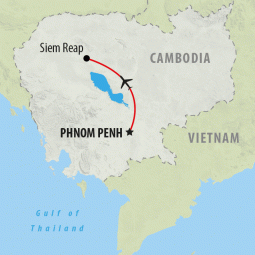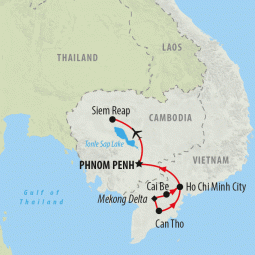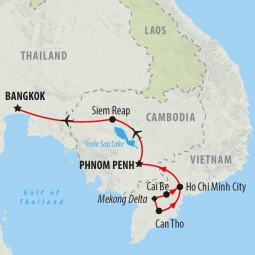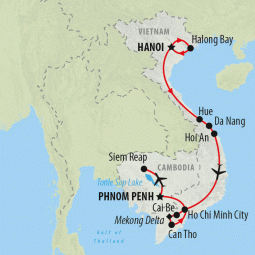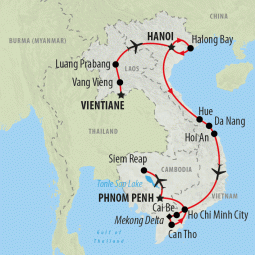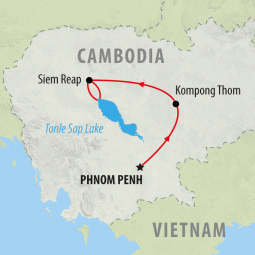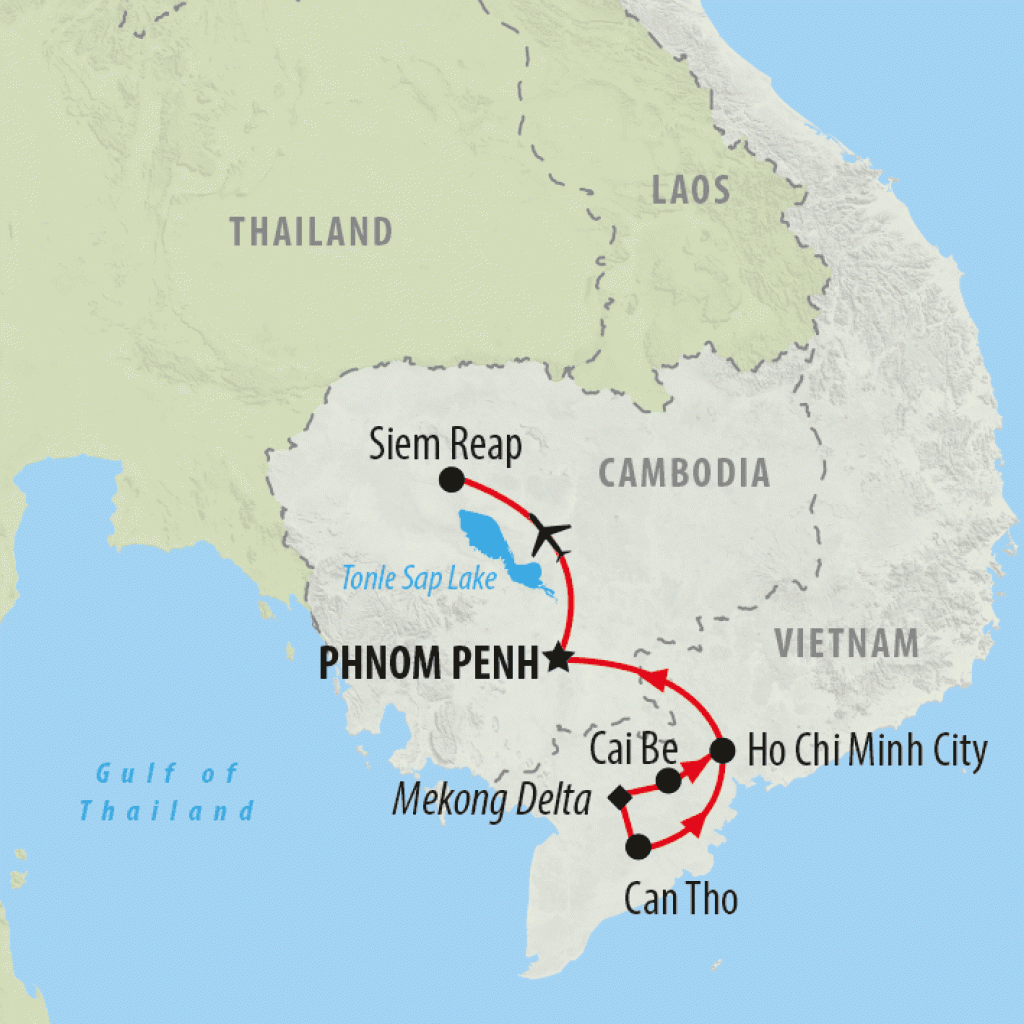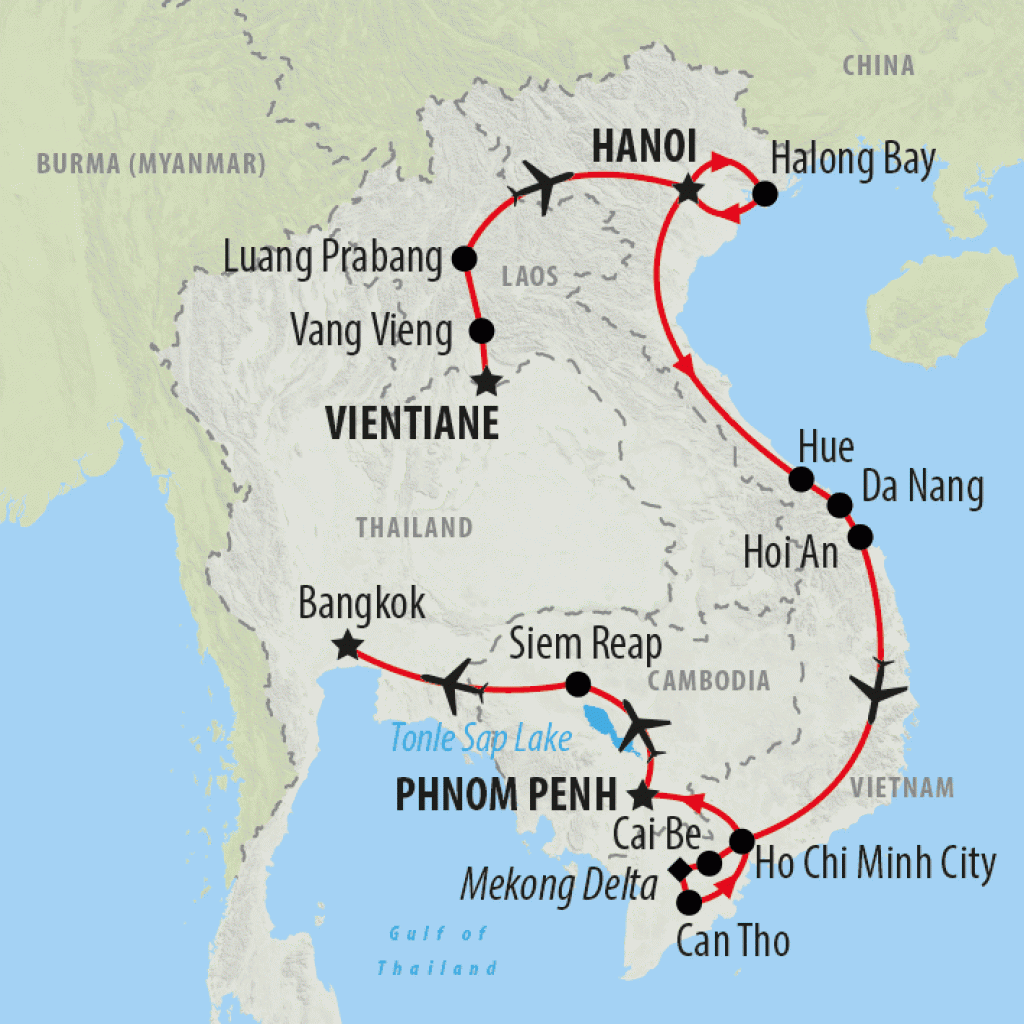About Angkor
Stretching across a forested area measuring 400km2, the incredible Angkor Archaeological Park is home to magnificently preserved temples that date back as early as the 9th century. Located north of Siem Reap, the Angkor complex was once the centre of the Khmer Kingdom that flourished between the 9th and 15th centuries, and the ancient city's striking architecture and urban planning is testament to the high standard of social order and hierarchy within the empire. As well as a staggering number of temples that feature intricate sculptural decoration steeped in symbolic significance, the archaeological park also features many hydrological engineering systems from the Khmer period including canals, large water reservoirs and basins. Closely related to their environment, these monuments provide telling evidence of the cultural, religious and symbolic values held by the Khmer rulers.
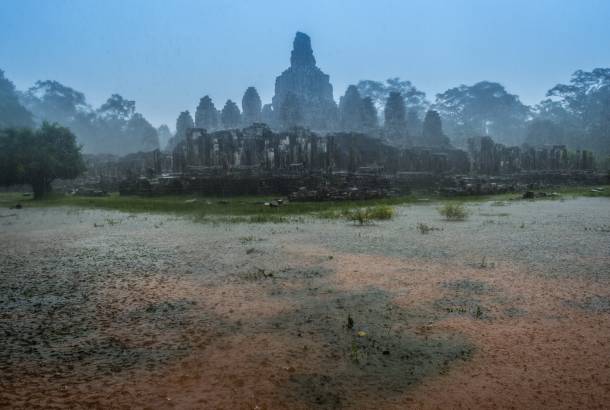
Best Time to Visit Angkor
Visiting hours are between 5am and 6pm though Banteay Srei closes at 5pm and Kbal Spean at 3pm. Sunrise and sunset are considered the best times of the day. They show the temples in all their brilliance, while providing the perfect lighting conditions for photography. Plus there's the added bonus of pleasant temperatures. The middle of the day is consistently the quietest time of day to visit the 'big 3' - Angkor Wat, Ta Prohm, and Bayon - so the best option if you're looking to avoid the crowds.
The peak tourist season running between November and February matches Cambodia's dry season, when there are minimal rains and bearable temperatures. March and April tend to see a slight decrease in visitor numbers as temperatures begin to rise in preparation for the monsoon rains.
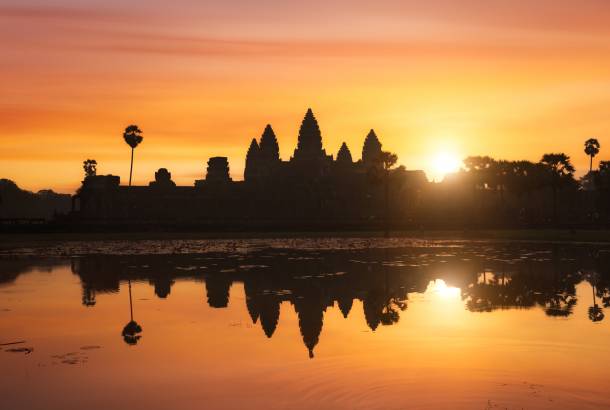
Top Spots for Sunrise
Angkor Wat - Top of the list for sunrise is the astonishing Angkor Wat. Looking out to the silhouetted image of the five lotus-shaped temples across the mirror-like pond strewn with lilies as the sun creeps up and decorates the sky in vivid pinks and oranges is one of the most special sights you can hope to see whilst visiting the Angkor complex. Understandably, it's one of the busiest spots and where many tour groups head first.
Bayon - The east-facing direction of Bayon makes it a great alternative for an early morning vantage point without the larger crowds. Position yourself across from one of the pools at the entrance to the temple and you'll be able to marvel as the famous faces of Bayon are gradually illuminated as the sun climbs higher in the sky.
Phnom Bakheng - Conventional wisdom has this as the best place for sunset but in the morning when the light comes up behind Angkor Wat, Phnom Bakheng affords attractive views out to the mother of all temples far from all the crowds.
Sra Srang - The Pool of Abultions east of Banteay Kdei can be a wonderful place for sunrise with the extensive waters brilliantly reflecting the colours of a new day.
Top Spots for Sunset
Phnom Bakheng - Its hilltop location affords incredible 360 views across the fields of the temple complex with the iconic Angkor Wat in the far distance. This distance does require a good telephoto lens if you're serious about your photography. It's one of the most popular spots for sunset which means you'll be sharing the experience with many others.
Pre Rup - For a more peaceful sunset experience head to Pre Rup when the sun dips and creates a warming glow over the countryside. Although you won't see any other temples, as they're obscured by trees, it's the ideal place to escape the crowds and explore a temple as the light slowly dims.
Phnom Krom - Located 12km south of Siem Reap, the hilltop temple of Phnom Krom is a lovely spot for sunset as it overlooks the scenic Tonle Sap Lake and offers dramatic views. Involving a long drive back to town once the sun sets, it sees far fewer visitors and can be perfectly combined with a day's excursion to the floating villages of Tonle Sap.
Angkor Wat - The crowning glory in the Angkor complex is as beautiful at the end of the day as it is at the start and most people will head to the western side of Angkor Wat to witness sunset. Head to the eastern side and you'll be rewarded with equally stunning scenes as the sun ducks behind the temple and throws it into shadow. Alternatively, head to the skies in the Sokha Balloon, a hot air balloon tethered to the ground that rises 150 metres for phenomenal views across the entire complex of Angkor Wat.
Angkor Wat Tours
Such an incredible site should be included on any tour of Cambodia - and that's exactly what we offer. On all of our group tours that include Cambodia we spend three days exploring the various temples and combine this with a visit to the floating villages of Tonle Sap. You can also take your time at Angkor with the services of a specialist private guide on our Cambodia Discovery itinerary that also includes time at Kompong Thom, a group of over 100 brick pre-Angkorian temples that date back as early as the 7th century. See our selection of favourite Angkor Temple tours below.
With so many temples to choose from you may prefer to create your own itinerary spending anything from one day to an entire week exploring the big stars and the smaller gems, taking your time to photograph and savour each temple's unique atmosphere. Our experienced tailor-made team are here to help.
Planning a Visit to Angkor
The vibrant town of Siem Reap is the perfect place to base yourself for a visit to the Angkor temples with a fantastic selection of modern and boutique hotels, world-class restaurants and luxurious spas. The temples are little more than a 15 minute drive away allowing you to spend full days exploring the complex without long journey times back to your accommodation.
Admission passes to the site are issued as one-day (USD $37), three-day (USD $62), and one-week (USD $72) passes to be used on consecutive days (prices correct as of February 2022). If you are short on time it's possible to visit Angkor Wat for sunrise followed by Ta Prohm and Angkor Thom, and finish with Bayon in the late afternoon light. Ideally, you want to allow yourself at least three days to explore the major sites and smaller temples. On the first day you could visit the petite Banteay Srei and Banteay Samre in the morning and the immense Preah Khan in the afternoon, followed by Preah Neak Poan, Ta Som, and Pre Rup for sunset. On the second you could follow the one-day itinerary, saving the major drawcards for after you've built yourself up for the spectacle. On the third day, you could either visit the Roulous group of temples - the earliest large and permanent temples built by the Khmers - and any number of smaller temples or spend the afternoon visiting the floating villages on Tonle Sap.
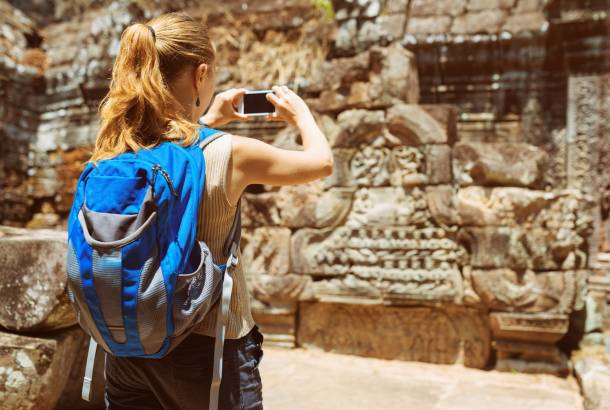
Useful Tips for Visiting Angkor
- Visit with a local guide who will provide you with invaluable knowledge on the history of each site and the spiritual significance of architectural features, bringing the temples to life.
- Plan your trip to Cambodia in the shoulder seasons to avoid the worst of the crowds and the worst of the weather.
- Rise early to get to the archaeological park as soon as it opens to witness sunrise and explore the temples before everyone else.
- The recommended Small and Big Circuit are popular for a reason but if you want to see the main temples without the high number of people, follow the circuits in reverse or design your own.
- Give yourself three days minimum to explore the best of Angkor; after all, it is the largest concentration of architectural riches on the planet!
- If you're worried about getting 'templed out', get as much covered as you want to see first thing and then spend the afternoon relaxing by your hotel pool or admiring the floating villages of Tonle Sap.
- Pick up something to eat at one of the many stalls or restaurants within the Angkor complex - it's cheap and means you can carry on touring whilst the larger tour groups head back to Siem Reap for lunch.
- Bring a torch. Some of the temples have dark narrow corridors worth exploring and the public toilets onsite are somewhat sporadic with the electricity supply. An umbrella to protect you against the rain/sun is a good idea also.
- Wear comfortable shoes - you'll be walking a fair bit and some of the surfaces can be uneven and slippery when wet.
- Keep your entry ticket on you at all times as visitors caught without one may be fined.
- The middle of the day sees temperatures soar so aim to visit well-covered temples during this time. Ta Prohm and Preah Khan are good options or you could take in the spectacular bas-reliefs of Angkor Wat.
- If travelling independently consider hiring a bicycle to get around or a driver and moto if you're looking to cover the temples further out. For something a little special, take to the skies in a helicopter for a bird's eye view (prices start at USD $100 for an 8 minute flight).
- If your Cambodia itinerary includes Phnom Penh, pay a visit to the National Museum and enjoy an extensive collection of Khmer sculpture recovered from the temples of Angkor.
